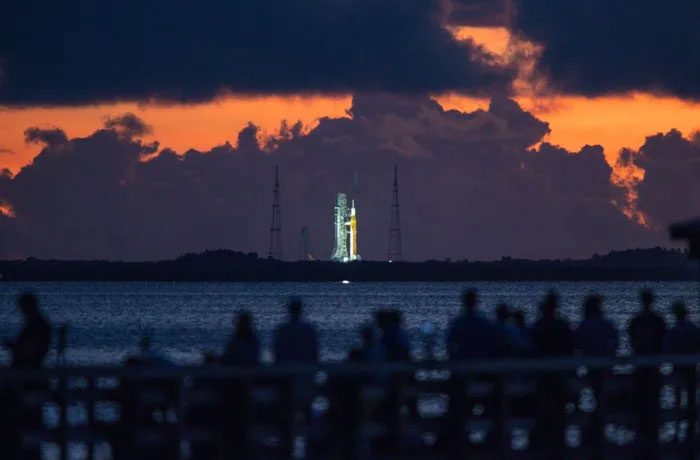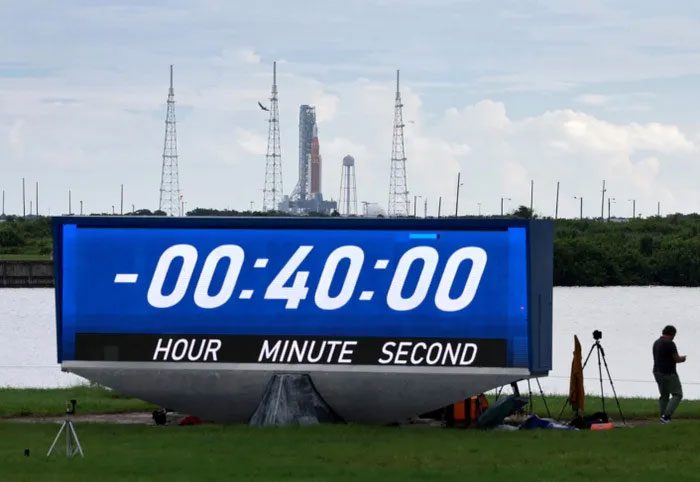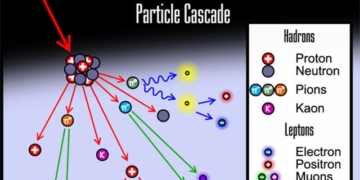The National Aeronautics and Space Administration (NASA) has announced a new launch date for the Space Launch System (SLS) rocket, carrying the Orion spacecraft for the Artemis I mission on September 3rd. The launch window will last for 2 hours, starting at 2:17 PM (U.S. time), which is 1:17 AM on September 4th (Vietnam time).
The first attempt to launch the SLS on the morning of August 29th was aborted due to a technical issue. One of the four RS-25 engines on the rocket, identified as engine number 3, did not reach the appropriate temperature range for liftoff. Previously, a quantity of liquid hydrogen (at a temperature of -252 degrees Celsius) had been transferred from the core of the rocket to cool the engine.
John Honeycutt, NASA’s Space Launch Program Manager at the Marshall Space Flight Center in Alabama, stated that engine number 3 was slightly warmer than the others, reaching approximately -245 degrees Celsius.

SLS rocket at launch pad 39B, Kennedy Space Center. (Photo: Zuma Press).
Nasa engineers met to evaluate the data recorded during the pre-launch preparations. The engine issue is believed to stem from the liquid hydrogen pumping system rather than the engine itself. Additionally, a faulty sensor may have caused inaccurate temperature readings for the engine.
“The sensor’s behavior did not align with the physical characteristics of that situation,” Honeycutt shared. According to CNN, engineers plan to transfer liquid hydrogen 30-45 minutes earlier than the August 29th launch attempt to better control and monitor the engine temperature.
“For yesterday’s launch attempt, we stated that we would not lift off if we could not regulate the temperature of the engines. This will also apply to the upcoming launch on Saturday,” said Mike Sarafin, NASA’s Artemis mission director.
Charlie Blackwell-Thompson, Artemis launch operations director, noted that replacing the sensor at the launch pad is quite complex. Therefore, the SLS would have to return to the assembly facility if a sensor replacement is necessary.
Several issues, including bad weather, fuel leaks on the lines, and vent valve problems, also caused delays for the August 29th launch, making the 2-hour window insufficient for resolution. Director Sarafin mentioned that some procedures have been adjusted to ensure adequate time for the next launch attempt.
On September 3rd, the SLS rocket will continue to launch from launch pad 39B at Kennedy Space Center in Florida. Weather forecasts indicate the possibility of rain and thunderstorms in the morning and early afternoon. Mark Burger, a meteorologist with the U.S. Space Force, stated that there is a 60% chance that weather conditions will impact the rocket launch.
Due to the constantly changing positions of the Earth and the Moon, NASA has only one opportunity to launch the SLS at 5:12 PM on September 5th. If not, the rocket will have to be pulled from the launch pad and returned to the assembly facility for maintenance. In that case, the launch date could be pushed to late September or early October.

The countdown clock stopped 40 minutes before the launch on August 29th. (Photo: Getty Images).
The Space Launch System (SLS) is designed to carry the Orion spacecraft into lunar orbit during the Artemis I test flight. If successful, this will mark the beginning of NASA’s mission to return humans to the Moon after the Apollo missions concluded half a century ago.
The Artemis I flight will be uncrewed and aims to test the effectiveness of the heat shield on the crew module and trial the voice-activated technology, Callisto, aboard the Orion spacecraft.
If the first flight is successful, NASA plans to send astronauts on the Artemis II flight, expected to launch in 2024 to orbit the Moon. In 2025, the Artemis III flight will land humans on the lunar surface for the first time in 50 years.





















































